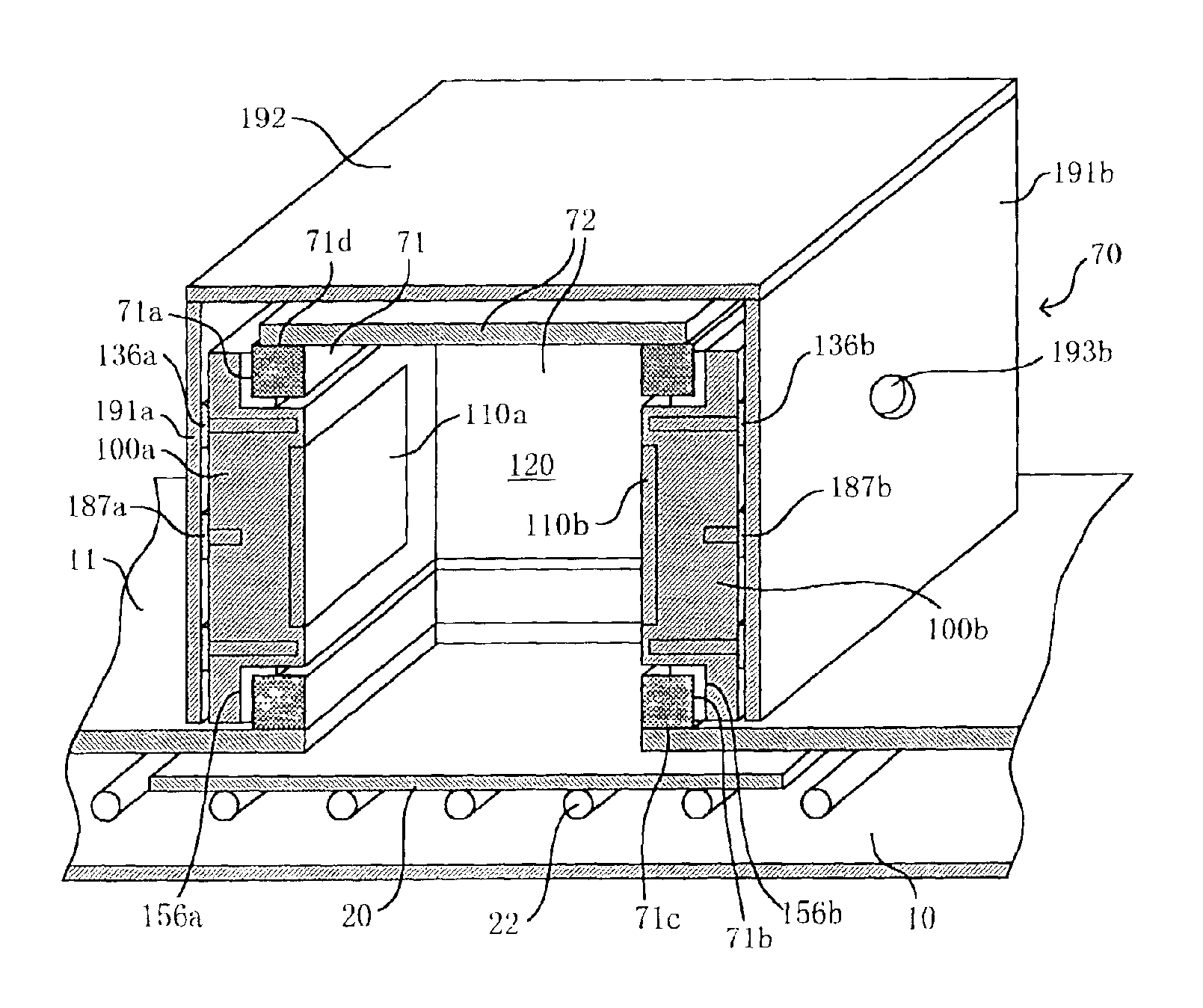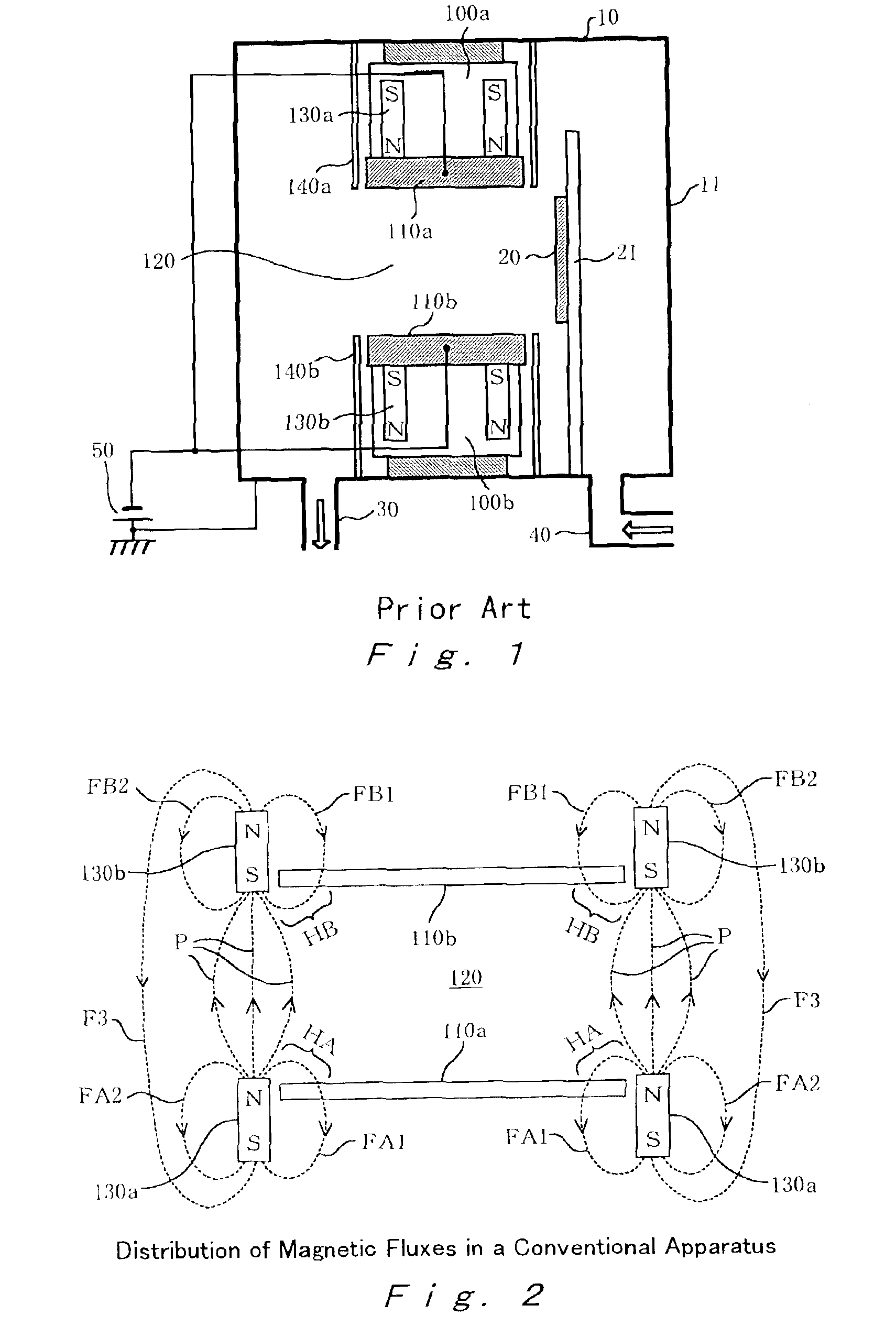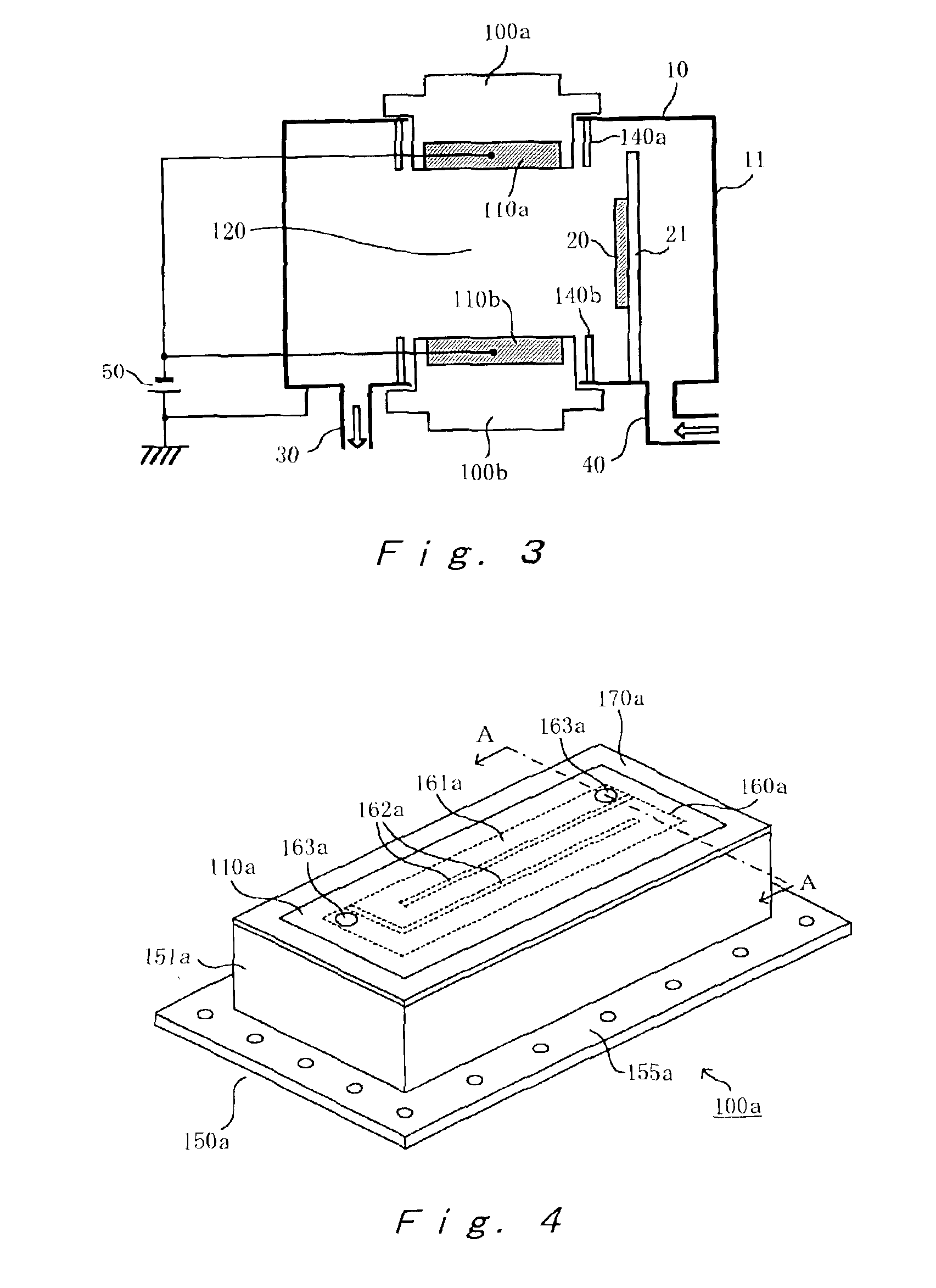Facing-targets-type sputtering apparatus
a sputtering apparatus and target type technology, applied in the direction of electrolysis components, vacuum evaporation coatings, coatings, etc., can solve the problems of high production costs, unsolved problems, and deterioration of vacuum seals with tim
- Summary
- Abstract
- Description
- Claims
- Application Information
AI Technical Summary
Benefits of technology
Problems solved by technology
Method used
Image
Examples
first embodiment
[0053]FIG. 3 is a schematic cross-sectional view showing a facing-targets-type sputtering apparatus according to a first embodiment of the present invention; FIG. 4 is a schematic perspective view showing a target unit employed in the sputtering apparatus shown in FIG. 3 according to the first embodiment of the present invention; FIG. 5 is a schematic vertical cross-sectional view of the target unit shown in FIG. 4, as taken along line A—A; and FIG. 6 is a schematic horizontal cross-sectional view of the target unit shown in FIG. 5, as taken along line B—B. The cross-section of a target unit 100a shown in FIG. 3 is shown in FIG. 5.
[0054]In FIG. 3, components corresponding to those in FIG. 1 are denoted by common reference numerals, and repeated description is omitted. The sputtering apparatus of the present embodiment differs from the conventional apparatus of FIG. 1 in the structure of target units 100a and 100b, and in that, in the sputtering apparatus of the present embodiment, o...
second embodiment
[0075]FIG. 7A is a schematic perspective view showing a facing-targets-type sputtering apparatus according to a second embodiment of the present invention; and FIG. 7B is a schematic cross-sectional view of the sputtering unit of the sputtering apparatus. Unlike the case where the target units 100a and 100b are mounted on the vacuum wall 11 of the vacuum chamber 10 as shown in FIG. 3, in the present embodiment, the target units 100a and 100b are mounted on opposing faces 71a and 71b of a rectangular parallelepiped frame 71, respectively, and faces 71d through 71f (a face 71e is not illustrated), excluding a face 71c which faces a substrate, are covered by use of closure plates, to thereby form a box-like unit 70. Since the facing-targets-type sputtering apparatus has a compact structure, maintenance of the apparatus is improved. In addition, the apparatus is suitable for mass-production at high productivity.
[0076]As shown in FIGS. 7A and 7B, the box-like unit 70 includes the rectang...
third embodiment
[0082]FIG. 8 is a schematic cross-sectional view showing the basic structure of a facing-targets-type sputtering apparatus according to a third embodiment of the present invention; and FIG. 9 is a schematic perspective view showing the sputtering apparatus according to the third embodiment including a box-like unit. Unlike the case where the target units 100a and 100b are mounted directly on the vacuum wall of the vacuum chamber, in the present embodiment, as in the case of the sputtering unit of the second embodiment, the target units 100a and 100b are hermetically mounted on opposing faces 71a and 71b (see FIG. 9) of a rectangular parallelepiped frame 71, respectively, and faces 71d through 71f (a face 71e located at the front side and a face 71f located at the back side are not illustrated), excluding a face 71c which faces a substrate, are hermetically covered by use of closure plates 72, to thereby form a box-like unit 70. The box-like unit 70 is mounted on the chamber wall 11 ...
PUM
| Property | Measurement | Unit |
|---|---|---|
| mesh size | aaaaa | aaaaa |
| thickness | aaaaa | aaaaa |
| length | aaaaa | aaaaa |
Abstract
Description
Claims
Application Information
 Login to View More
Login to View More - R&D
- Intellectual Property
- Life Sciences
- Materials
- Tech Scout
- Unparalleled Data Quality
- Higher Quality Content
- 60% Fewer Hallucinations
Browse by: Latest US Patents, China's latest patents, Technical Efficacy Thesaurus, Application Domain, Technology Topic, Popular Technical Reports.
© 2025 PatSnap. All rights reserved.Legal|Privacy policy|Modern Slavery Act Transparency Statement|Sitemap|About US| Contact US: help@patsnap.com



